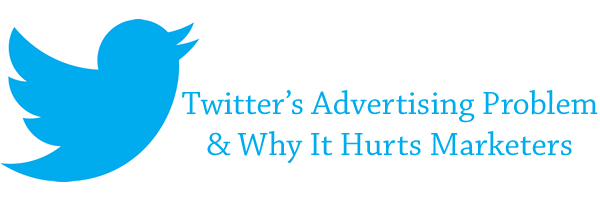As Twitter continues to promote its promoted tweets and other sponsored posts, one major issue is stalling the growth of advertising – the fact that a large percent of users never see these Twitter ads at all.
Twitter boasts a very significant 271 million users but 37.9% of those people never log in to Twitter using either the website or the official mobile app. Instead they are using one of the many third party apps where they never see any Twitter ads.
As marketers, there could easily be specific market areas where that segment is using one of the third party apps such as Flipboard, or simply sharing content via share buttons on other websites, and without those log in on Twitter’s mobile site, app or website, advertisers will find it impossible to reach those types of audiences through traditional Twitter advertising. And what is more, Twitter is still counting them as active users, even if their activity is not one where they would ever see ads.
Just how big is the third party app issue? Not only is it a significant portion, but it is increasing – at the end of December 2011 it only accounted for 5% of daily active users, last year was a slight increase to 7% but today it has jumped up to 14% – and if this continues to climb, especially if their current daily users begin to switch to third party apps, it would hurt not only Twitter’s revenue, but also advertisers ability to reach them.
There is also the consideration of how much those third party app users contributed to the growth of Twitter in the first place. It might only account for 14% of users, but what if that 14% of uses contribute 30, 40 or even 50% of all tweets – and with the popularity of some of the apps amongst both celebrities and techies, it could very well be a possibility – those non-ad-showing apps could have played a major role in Twitter’s overall success. However, when Twitter removed the line from tweets that it was posted via a specifici Twitter app, it was largely seen as an attempt by Twitter to not promote those third party apps as much.
Twitter does seem to be working on getting their ads in front of those who use third party apps. For example, Flipboard has tested full page Twitter ads as a tile that user’s flip though in their feed in addition to other tiles pulled from their Facebook news feed. And Flipboard seems to be interested in changing their relationship with Twitter from merely a content partnership to a commercial one. In this scenario, it would almost be certain that Twitter would share part of that revenue with Flipboard.
If Twitter begins revenue sharing with third party apps – and if third party apps continue to account for an ever-increasing user base- but how that works its way down to advertisers remains to be seen – would those ads be more expensive to take into account revenue sharing or would Twitter see the added revenue as compensation enough from advertisers?
On the positive side, if Twitter does move to a model where their ads could appear in third party apps, it opens up the possibility where advertisers could specifically advertise to those apps, or design special ad formats or marketing messages specific to the individual apps – such as a tile specifically for Flipboard. Of course, Twitter is also having to solve other advertising problems too.

[…] Twitter’s Biggest Advertising Problem & Why It Hurts Marketers, http://www.thesempost.com […]